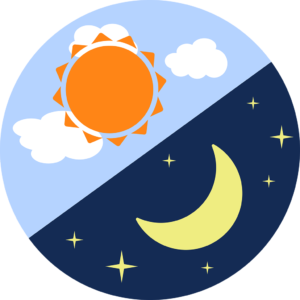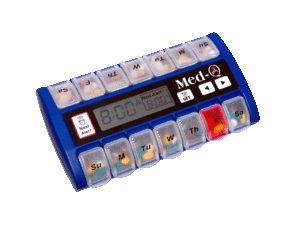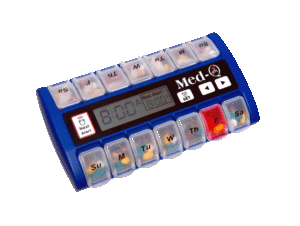
Autumn Safety Tips for Older Adults
Autumn Safety Tips for Older Adults and Seniors This is the third

Alzheimer’s research from UVA Health suggests that enhanced light sensitivity shown may contribute to Sundowning In Alzheimer. It has shown that “sundowning” symptoms will get worse as it gets later in the day.

Alzheimer’s research from UVA Health report’s that enhanced light sensitivity , for many, will get late in the day. Furthermore, this can often cause sleep disruptions. The disruptions have some limited clinical evidence that it will contribute to the disease’s progression.
Alzheimer’s suffers will often experience sundowning. This is a restlessness, agitation, irritability, or confusion that can begin or worsen as the sun sets. This is the time when worn out caregivers take a much needed break. Sun downing will often can continue late into the night. This makes it very hard for Alzheimer’s suffereres to fall asleep and stay in bed all night.
The insights into the disruptions of the biological clock seen in Alzheimer’s could have important potential both for the development of treatments and for symptom management, the researchers say. For example, caregivers often struggle with the erratic sleep patterns caused by Alzheimer’s patients’ altered “circadian rhythms,” as the body’s natural daily cycle is known.
What are circadian rhythms? Circadian rhythms are physical, mental, and behavioral changes that follow a 24-hour cycle. These natural processes respond primarily to light and dark and affect most living things, including animals, plants, and microbes. Chronobiology is the study of circadian rhythms.
 New kinds of experimental Light therapy has shown to be a useful tool to help with management. Further, an improved understanding of the way that Alzheimer’s effects a person’s biological clock could have implications for preventing or slowing the progression of the illness. Bad sleep by adults has been shown to be a huge risk factor for Alzheimer’s. Why is this so?. When we sleep, our brains naturally cleanse themselves of amyloid beta proteins. These are the proteins that are thought to form harmful tangles in Alzheimer’s. persons brain.
New kinds of experimental Light therapy has shown to be a useful tool to help with management. Further, an improved understanding of the way that Alzheimer’s effects a person’s biological clock could have implications for preventing or slowing the progression of the illness. Bad sleep by adults has been shown to be a huge risk factor for Alzheimer’s. Why is this so?. When we sleep, our brains naturally cleanse themselves of amyloid beta proteins. These are the proteins that are thought to form harmful tangles in Alzheimer’s. persons brain.
“Circadian disruptions have been recognized in Alzheimer’s disease for a long time, but we’ve never had a very good understanding of what causes them,” said researcher Thaddeus Weigel, a graduate student working with Heather Ferris, MD, PhD, of the University of Virginia School of Medicine’s Division of Endocrinology and Metabolism. The news research shows that changes in light sensitivity as an interesting explanation for some of those circadian symptoms that are brought on.

First of all, Alzheimer’s is the most common form of people’s developing forms of dementia. Second, it has an impact on over 60million people world-wide. Its is recognized by a progressive memory loss,. This is not just forgetting where you left the car keys. Many sufferers can even forget their own family and other loved ones. This being said, there can be many other symptoms. For example, extreme restlessness, as well as forms of aggression. Alzheimer’s sufferers may show bouts with poor judgment and endless searching through out the home.. These symptoms get worse for many after the sun goes down.
 Ferris and her co-researchers tried using the mouse model of Alzheimer’s . The goal was to form a better understanding of exactly what happens to the biological clock in the stages of Alzheimer’s. The experiment was ingenious. The Researchers gave the mice “jet lag” by altering their exposure to light. After, they anylised how it affected the mice’s’ behavior. The Alzheimer’s mice did indeed reacted very differently than the study group of mice.
Ferris and her co-researchers tried using the mouse model of Alzheimer’s . The goal was to form a better understanding of exactly what happens to the biological clock in the stages of Alzheimer’s. The experiment was ingenious. The Researchers gave the mice “jet lag” by altering their exposure to light. After, they anylised how it affected the mice’s’ behavior. The Alzheimer’s mice did indeed reacted very differently than the study group of mice.
The study group of mice adapted to a six-hour time change significantly more quickly than the control group of mice. Thus, the researchers think that it is from heightened sensitivity to changes in light brightness and hues. For normal people, the biological clocks will take it’s cues from light. For normal people, this adjustment happens gradually. For example, experiencing jet lag when travel long distances with time zone changes. At first, researchers believed it was from inflammation in the brain (neuroinflammation).
Neuroinflammation (NI) is the process by which an organism attempts to remove an injurious stimulus in the central nervous system (CNS) and initiate the healing process to protect the cells and overall function of the brain.
So they looked at immune cells called microglia. These cells have become a promising targets in efforts to develop superior and effective Alzheimer’s protocols. However, scientists eventually ruled out the theory. They found that microglia did not make a difference in how quickly mice adapted.
Notably, they also disqualified another potential cause. The ruled out cause, mutant tau. This is a kind of abnormal protein that forms tangles in the Alzheimer’s brain cells. These tangles in the mouse’s brains did not make a difference in how quickly the mice were able to adapted.
There has been some valuable information gianed. It has been discovered that there is an important role for the retina in light sensitivity from Alzheimer’s. Finally, this new data has given this and othetr researchers a promising direction to pursue. The ultimate goal with Sundowning from Alzheimer’s research is modern methods in treating, managing and ultimately, prevent the disease.
These infornmation shows that a controlled light and the timing of the light can reduce circadian disruptions in Alzheimer’s disease,” Ferris said. “We hope that this research on Sundowning from Alzheimer’s will help us to develop light therapies. These will be used to slow the progression of Alzheimer’s disease.
Sundowning from Alzheimer’s research

Autumn Safety Tips for Older Adults and Seniors This is the third

Amazon Reviews of the MED-Q Digital Pill Box Picking the best Digital

85% of Seniors make medication mistakes 85% of Seniors are making medication

What is the Best Pill Dispenser? Picking out the Best Pill Dispenser

Dementia Medication management – the missing link Why is proper Dementia Medication

A massive study of medical and genetic data shows that people with

The Five Rights of Medication Administration Improper Medication Administration leads to problematic

Thousands of Lives would be Saved if Heart Attack Patients did This

Understanding Anemia What is anemia? Furthermore, this is magnified in r

Best Programmable pill box with alarm https://medqpillbox.com/wp-content/uploads/2023/08/36-video.mp4 First of all, using a

Caregivers and Seniors Need to Know about Pills and Medications. It’s very

Best Medication dispenser for Deaf People What is the Best Medication dispenser

The five hidden costs of being a Alzheimer’s Caregiver What are the

14 Day Pill Organizer with Removable Daily Pill Boxes Med-Q 14 Day

Nine Tips For Ensuring Medication Safety Tips For Ensuring Medication Safety can

Lorem ipsum dolor sit amet, consectetur adipiscing elit. Ut elit tellus, luctus

Parkinson’s Disease Symptoms never to ignore Symptoms Never to Ignore With Parkinson’s

Great Tips for Spousal Caregivers Being a care giver is a big

Frequently asked questions about pill organizers and dispensers from Caregivers

Manage all prescriptions to prevent mistakes Try to focus on reducing stress

Alzheimer’s suffers will often experience sundowning. This is a restlessness, agitation, irritability, or confusion that can begin or worsen as the sun sets.

Med-Q 14 Day Pill Organizer with Removable Daily Pill boxes is the solution to forgetting and overdosing


Are You Heading to a Medication Crisis?